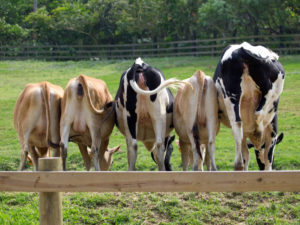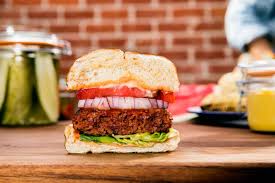“Cow Farts” Regulated. An Alternative


Did notice escape you that legislation was enacted into CA law last week that regulates greenhouse-gas emissions tied to livestock and dairy cow manure management…and organic waste and landfills? Reminiscent of the so-called rain tax (stormwater remediation fee) here in MD, the New York Post’s headline read: “California regulates cow farts.”
Actually, Salon reported a couple of years ago that there’s a feed supplement that can reduce methane gas from manure as per the headline: “Fart-reducing supplement could reduce cows’ contribution to climate change.”
Well, don’t know about you, but this program could be helpful if implemented widely. The EPA reports that methane gas constitutes 11% of total GHGs, including from agriculture. Other organizations report the figure as high as 14%.
As per the Post, the law (SB 13-83) takes aim at “short-term climate pollutants.” Methane gas, which I’ve often written about in the past (see Search tool), is an extremely potent component of GHGs. CO2 is the more frequently cited component.
CA Republicans went on the record saying strict new regulations will hurt agricultural businesses. But, the law does make concessions to dairy farmers. The Post reports: “Dairy farmers will be required to reduce methane emissions from manure to 40 percent below their 2013 levels by 2030 [my emphasis], with the help of $50 million from the state’s fee charged to polluters, known as cap-and-trade.” (I’ve written about cap-and trade here.)
Dairy farmer Stephen Maddox has 3,200 cows producing milk on his dairy in Riverdale, CA. As reported by ABC30, Maddox has been trying to tamp down the methane from cow manure by composting it. Composting it contributes to cow comfort, he says. He’s also employing different feed technologies. Perhaps supplements to reduce the gas in cow waste?
“The law also allows the Air Resources Board to regulate cow flatulence if there’s viable technology to reduce it,” reports the Post.
With all due respect for the importance of Mr. Maddox’s enterprise and livestock producers, there’s an alternative to livestock consumption that is reported as satisfactory both in taste and appearance. Enter-

Some of you may be ahead of me on this? Some not.
Ethan Brown, a 2008 graduate of Columbia’s Business School, doesn’t think there’s anything wrong with meat-eating, often. He just thinks we’re much better off if the “meat” is plant-based.
Brown’s goal has been to make a plant-based alternative that tastes like the protein derived from animal meat and has a very similar texture.
More particularly, he reports in an interview in the Fall 2016 issue of Columbia Magazine that the other way to think about meat is that it’s “just a composition of amino acids, lipids, carbohydrates, and water.”
Interesting to note that earlier in Brown’s career he worked for a clean energy company where he learned about the role of diet in climate change. “It became increasingly clear to me how much the meat industry is contributing to greenhouse-gas emissions. And that’s not to mention its role in other societal problems, like heart disease, diabetes, and cancer.”
Early on the road to Beyond Meat, Brown tasked some chemists with analyzing the molecular structure of animal protein in order to replicate it in plants.
Last spring Beast Burger was debuted in stores. Beyond Meat’s plant-based burger browns on the outside and stays pink, or less well-done on the inside. For “meat juice,” the Beast Burger contains pulverized beets.
You can find Beyond Meat’s products in the meat isle, including a chicken substitute. High in protein, vitamins, calcium and iron.
 Medium-rare, anyone?
Medium-rare, anyone?